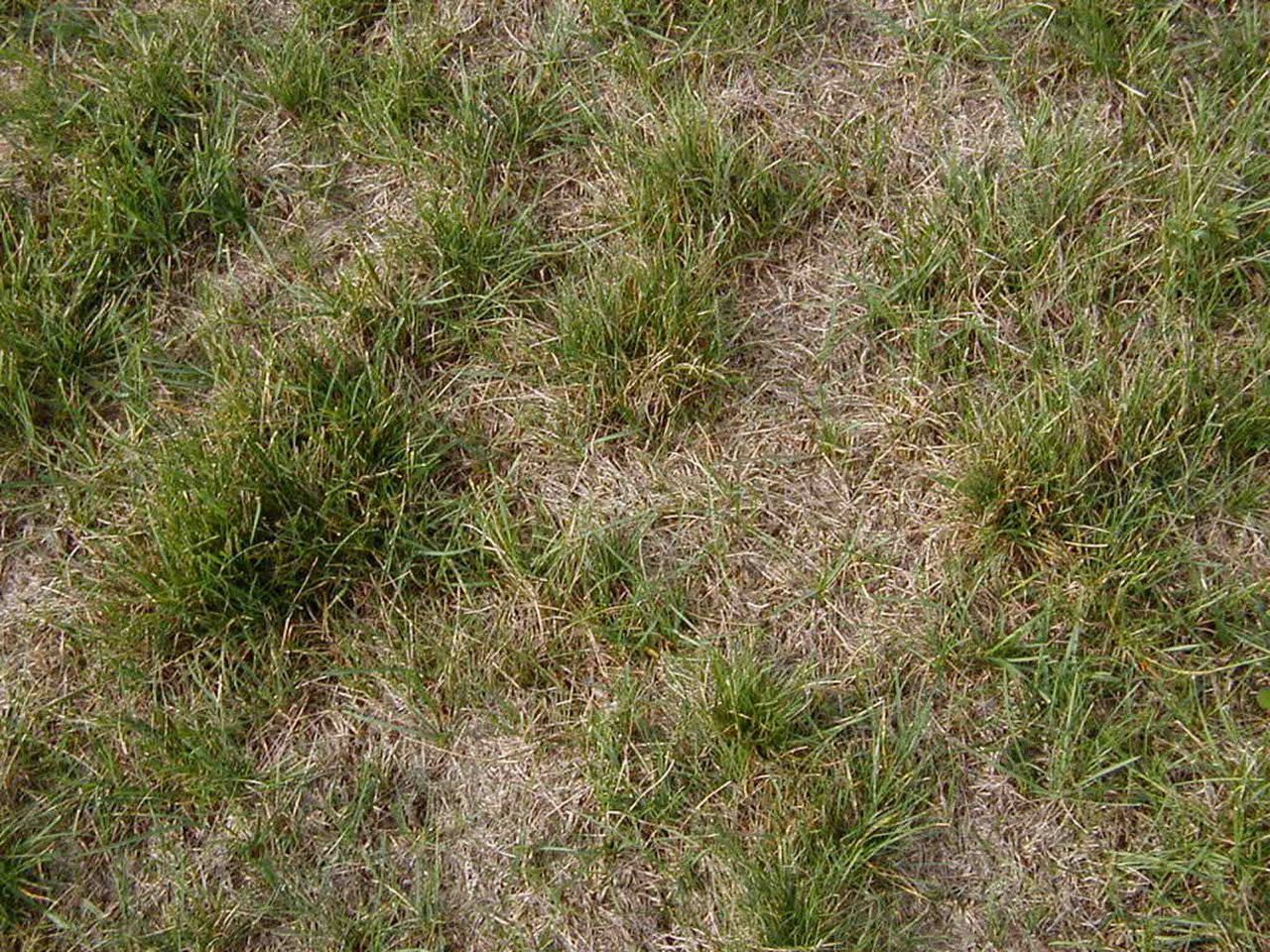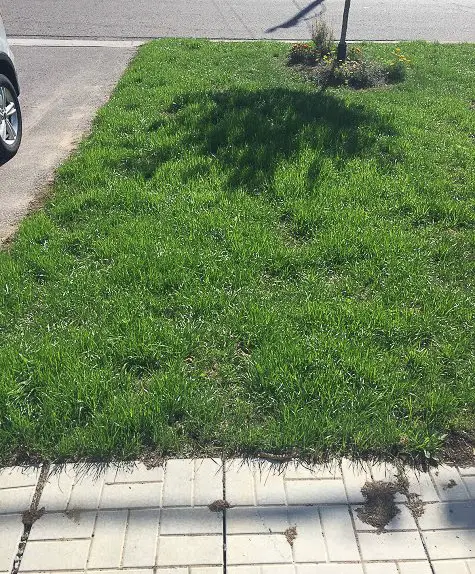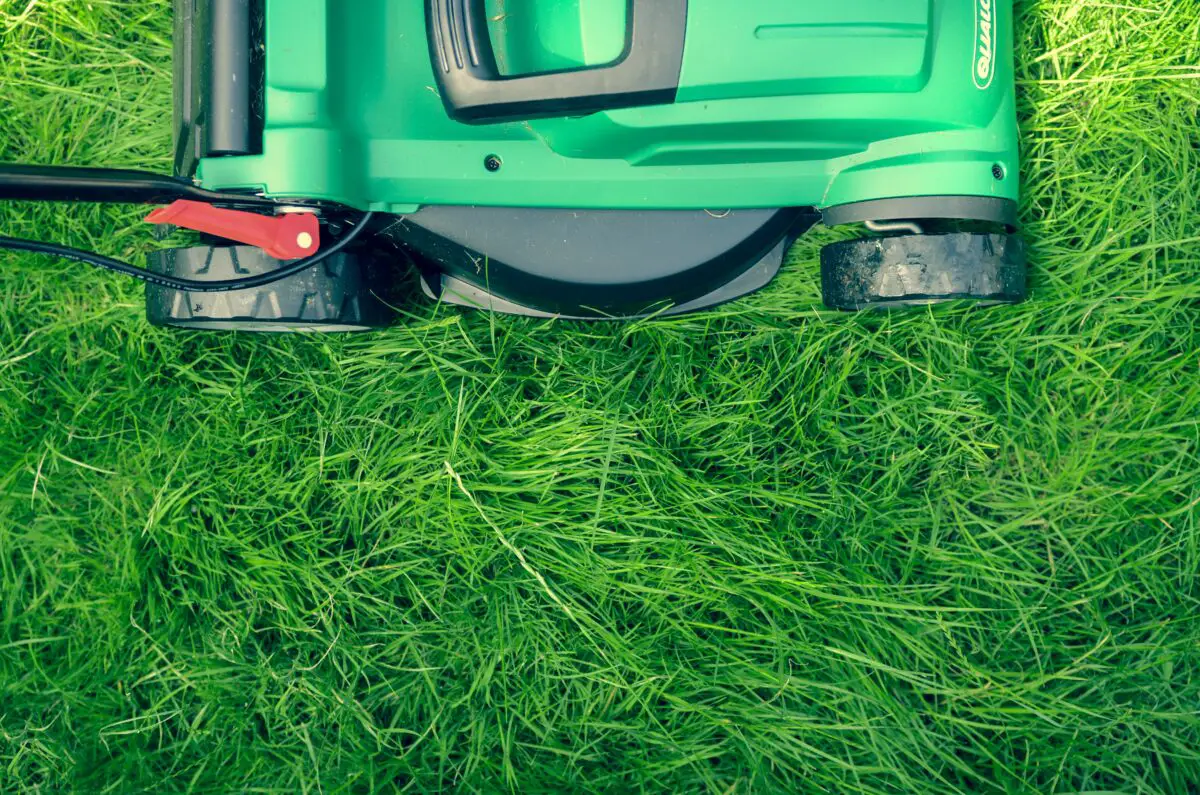But Before You Go For It Are You Sure You Want To Sow Grass Seed
Now, you might want to jump right into the discussion, but thats not the smartest choice. Before you actually plan to sow your seed, you must know that there is one more way that you might want to go for.
So, the second way that you might want to go for is to actually spread them on top of the soil. A lot of people believe that this is not a good way because the grass would not germinate. However, you can learn more about the germination rates of grass when spread on top of the soil on our article entitled Will Grass Seed Germinate on Top of Soil?
Now, naturally, you must also keep in mind the problems with spreading seed above the soil. One of the main things are that your grass seed can actually be eaten by birds! However, theres no reason to worry about that, because Turf Mechanic is here for you!
The Best Time To Aerate Your Lawn
For the best results when overseeding, our lawn aeration service advises you aerate before planting. The purpose of aeration is to break up the soil and allow it to breathe. That way new grass roots can penetrate deeper into the soil and have access to more nutrients. When should you aerate cool-season grasses and warm-season grasses?
The trick is to aerate right before overseeding. The best time to have lawn care services aerate your lawn in Midwest locations is usually around August or September. In warmer states, aerate in late spring or early summer.
Water Immediately And Maintain Your New Lawn
As with overseeding, the ground needs to stay moist until germination has completed, which for most seeds occurs within a couple of weeks. Some, however, can take up to a month. Again, check your seed instructions to understand germination time for your specific seed. Once you start to see germination, you can cut back on watering. Dont overwater, as you could potentially wash seeds away. Hold off on resuming your mowing schedule until you feel youve reached the point where germination is complete.
You May Like: How To Keep Your Lawn Healthy
What Makes It Too Late
Most people know that watering your new lawn is critical to get it to grow but it is also important to have adequate soil temperatures when you seed. If your soil temperature goes below 55 degrees Fahrenheit it will be very difficult to get those seeds to germinate. Likewise, if young tender seedlings are continuously hammered with frost or even snow they may not make it through to Springtime.
Soil is a better insulator of heat than air is. This may mean that just because its 50 degrees outside doesnt mean your soil is that cold. Temperatures fluctuate throughout the day and night so soil temperatures will gradually lower as temperatures get consistently cooler at all times of day and night, and as sunshine isnt as prevalent to warm up the ground.
How To Maintain Your Lawn After Overseeding

Grass seed takes seven to 21 days to germinate.
- Youll need to keep your lawn moist during this time to trigger germination. If you have an irrigation system, this is easy to do. Otherwise, youll need to set out a sprinkler or water smaller areas by hand.
- Once you see seed popping up, dont stop watering. These little seedlings need to be nurtured during their first eight weeks of existence. Without a mature root system they can dry out quickly and die.
- Applying a starter fertilizer at the time of overseeding is not necessary. If you normally fertilizer your lawn, there are enough nutrients in the soil to get the new seed growing. Applying fertilizer to your lawn after overseeding can create unnecessary competition from existing grass, making it difficult for new seedlings to get established.
With the help of a few basic tools, a nearby rental store and a free weekend, you can restore your lawns original health and beauty. Fall is a great time for other lawn care projects, too. Aerating and fertilizing are perfect companions to overseeding, as long as they happen a week or two before you overseed.
Also Check: How Much Does It Cost To Astroturf Your Lawn
Things To Do After Aerating Your Lawn:
When to Aerate Your Lawn, Bayer Advanced, Web. Accessed Jan. 28, 2016
Day, Julie, Spring Lawn Care Guide, TodaysHomeowner.com, Web. Accessed Jan. 28, 2016
Fresenburg, Brad S. Spring Lawn Care Aeration, Fertility and Crabgrass Control, University of Missouri Integrated Pest Management, Web. March 15, 2012
Juror, Richard and Wallace, Greg, Properly Aerating Lawns, Iowa State University Extension and Outreach, Web. Aug. 12, 2015
The Dormant Seeding Process
Dormant seeding involves putting down seed while the ground is not frozen, yet cold enough so germination of the grass seed will not occur until next spring when the soils begin to warm. In fact, seeds that do germinate late in the season often do not survive the winter because the very young, immature seedlings have a difficult time surviving those harsh conditions. Other than the time of year of dormant seeding, the actual process of preparing the area to be seeded is virtually identical to establishing grass from seed at other times of the year.
Recommended Reading: What Does Lawn Service Cost
When To Plant Grass Seed In Spring
If you have your heart set on planting grass in spring, early April is, in fact, the best time to do it. But, depending on where you live, spring seeding could come with complications.
Heres the thingspring elements in the Midwest or Northeast are actually great for growing cool seasons grasses. The problem is, weeds also thrive in these elements. That means your grass will be forced to compete with unwelcome weeds as it tries to grow. Not to mention, if springtime weather isnt just right, like for example, the soil is too cold or its overly drenched by rain, you probably wont have much success growing new grass. Also, if your lawn is scheduled to have pre-emergent weed control applications around this time, be aware that this will inhibit grass seed from germinating.
Now, lets say the weather is perfect for planting grass in April. Should you do it?
You could, but theres a chance youll run into issues come summertime. Stressful summer heat could slow or completely stop the growth of cool-season grasses. Warm-season grasses, on the other hand, are meant to be planted in late spring or early summer.
So yes, you can plant cool-season grass in spring, and you should shoot for April if youre doing so. But, your lawn will have a much better chance at survival if you wait until later in the year.
When Is The Best Time To Aerate
Aeration is best performed just before or during periods of high growth. However, not immediately preceding or during periods of stress to the lawn. For example, heat or drought. The type of grasses that make up your lawn will determine the best time of year to aerate.
When to Aerate if You Have Cool-Season Grasses: If youre working with cool-season grasses, including bluegrass, fescue, and ryegrass, aerating during the growth periods in the spring and fall is best.
When to Aerate if You Have Warm-Season Grasses: For warm-season grasses such as Bermudagrass, buffalograss, St. Augustine and zoysiagrass, aerate during warm times of the year, between late-spring and early-autumn.
Considerations for Aerating in the Spring: In the spring, wait until youve mowed the lawn a few times before aerating. Doing so ensures the lawn will grow fast enough to recover and take advantage of the increased pore space and air exchange at the root zone that aeration creates.
One caveat, says Friell, is that any disturbance of the root zone in the spring can increase weed competition by bringing buried seeds to the surface. Applying fertilizer and a pre-emergent weed killer following aeration can reduce the potential for weed competition and increase the hardiness of the grasses. But dont apply a weed killer if you plan to overseed following aeration. It will prevent germination of the seed you put down.
Read Also: Can You Hydroseed Over An Existing Lawn
A Note About Scarifying Tools
Depending on the size of your lawn, you might choose to scarify manually or with a powered machine.
At the end of the day, the type of tool you use is up to. However, in my opinion, good rated lawn scarifiers are powered machines which have changeable cassettes; one for raking and another for de-thatching.
Not only do they make the job easier on your back and hands, but you can do both jobs with the same machine.
Consistent Soil Moisture Is Key
Take advantage of the season, when cooler temperatures and more consistent soil moisture make things less stressful for delicate, newly forming grass blades. Fall rains tend to be gentler than those in spring, allowing the water to soak into the soil where it will do some good. In addition, less irrigation is required because the hottest weather will have passed. Weeds and pests are less prevalent, too, lessening competition and stress on new grass.
Our fall lawn care guide shows you how to ensure a greener lawn next spring.
You May Like: How Do I Fill In Bare Spots In My Lawn
Best Time To Aerate And Overseed Your Lawn
Theres nothing better than a lush lawn that lets you spend time with your family in the back yard, laughing and having fun. But, to keep grass healthy, techniques such as overseeding and aeration are important. This leads us to the question, when is the best time to aerate and overseed your lawn?
Its Not Too Late To Seed: Your October Lawn Care Guide

;;|;;Categories: Seeding, Fall
Have you been debating whether or not to reseed or overseed your lawn this fall? Well, weve got great news: its not too late!
Seeding early in the fall is always best, but there is still time to develop a thicker, greener lawn if you seed now. It is always better to do so in the fall than waiting for next spring when weeds and cold weather can hinder your efforts.;Despite evening temperatures dropping below 60ºF, the soil temperature is about 5º to 10ºF higher. Newly planted;grass seed;likes warm soil which is one of the reasons why fall is the best time to seed. In warmer soil, grass roots reach down deep to establish the plant before winter weather sets in.;
If youre reseeding or overseeding this fall, follow these steps:
Recommended Reading: What To Use To Kill Ants In Lawn
When Do I Reseed My Lawn
For cool season grass, the best time of year to reseed your lawn is spring or fall. Both seasons offer benefits for perfect results.Reseeding at the end of spring ensures that cool season grass seed will have enough time to establish before the cold weather sets in. Reseeding in the fall means less risk of weeds, but the soil will still be warm.
Rake & Till Your Lawn
Fertilize
Using a spreader, fertilize what remains of the lawn. It is best to use a starter fertilizer because it has the proper nutrients that grass seeds need to germinate and grow quickly.
Note: Always follow the manufacturers instructions for proper spread rate for a new lawn.
Spread Grass Seeds
Add Mulch
Water Your New Lawn
How To Overseed Or Reseed Your Lawn
There’s a secret behind achieving a beautiful, lush lawn. Landscape professionals know what it is, but many homeowners don’t. Overseedingas part of a comprehensive, proactive plankeeps lawns looking great. Whether you’re tending your first lawn or have years of experience, learning how to overseed your lawn can improve your results.
Overseeding is spreading grass seed over an existing lawn. Done right, it’s a straightforward process that gets results. As grasses mature, thinning is normalespecially if you enjoy your lawn and use it often. Overseeding keeps your lawn competitive and steeped in youth and vigor, without starting over from scratch.
The basics of overseeding are the same everywhere, but goals and timing vary based on geography and the type of grass grown. For success with overseeding your lawn, follow this basic guide:
Read Also: What Is The Best Lawn Sweeper
Why Are Yearly Aeration And Overseeding Important
The idea behind lawn aeration and overseeding is tostrengthen your entire lawn. By filling in empty or bare spots with new grass,you do more than make your lawn look beautiful; you actually increase itsresistance to pests. With a thick, lush and uniform bed of grass, its harderfor weeds to take hold, which makes taking care of grass easier, too.
Aeration breaks up compacted soil so water and otherlife-giving lawn nutrients can reach roots easily. This has a huge effect ongrass health and growth. In fact, even if your lawn is gorgeous and green allover, you should still aerate in the growing season to keep things that way.
The Best Time To Overseed Grass
Overseeding means planting new grass to fill in any bare orworn patches. This is helpful for having a gorgeous lawn that looks thick andhealthy all year long. The best time to overseed depends on two factors: whereyou live and what kind of grass you prefer.
Many homeowners in northern states choose cool-seasongrasses, and southern areas often select warm-season grasses. Each type ofgrass has distinctive growth patterns and needs, so make sure to speak with ourlawn professionals if youre not sure what variety to choose. Here are theoptimal overseeding times for several locations and grass types:
- PacificNorthwest : Plant new grasses about six weeks beforethe first projected snowfall. These are generally cool-season grasses.
- SouthwestU.S. : Early spring is the best time foroverseeding in these areas.
- Southernstates : April, May and June are good times tooverseed in this huge area. The best time may vary each year depending on soiltemperatures. You want warm-season grass to have a cozy environment togerminate in.
- Northeaststates : Due to the cold temperatures prevalent in theseareas, its best to start planting grass seeds in August or September to givethem some time to grow before winter hits.
- MidwestU.S. : Weather conditions vary quite abit depending on how far north you live, but a safe bet is to overseed lawns bythe end of August or early September at the latest.
Also Check: When Should Lawn Aeration Be Done
The Best Time To Plant Grass Seed
When your sights are set on a thick, lush lawn, planting grass seed represents an investment of time, money, labor and hope. From seeding new lawns to repairing rough spots and renewing existing turf, proper timing separates sweet success from something less. Your best time for planting grass seed depends on the type of lawn grass you grow and where you live. Understanding your options and getting timing right helps you seize every opportunity for seeding success.
Choosing Well Adapted Seed
When choosing the seed to use, be sure to select seed mixes that are well adapted to both your site conditions and the amount of maintenance you expect to provide during the growing season. For average lawn conditions, mixes containing some Kentucky bluegrass, fine fescue and small amounts of perennial ryegrass can be sown about three to four pounds per 1000 ft2.
You May Like: Who Sells Murray Lawn Mower Parts
So When Is It Too Late
Naturally, any time after this point of grass should be treated as too late to plant the grass seeds. However, being little late is still permissible if your seeds gets favorable weather. It is perfectly too late when your seed would have to grow in adverse weather conditions.
Expert recommend not growing the grass seed in adverse weather conditions because it actually makes it harder for the grass seed to grow in a healthy way. The growth of the young seed at this stage is actually what is going to decide the overall look and strength of your turf, and you dont want to get it damaged by planting your seeds too late, do you?
Water Deeply But Not Too Often

- Too much watering can lead to poor growing conditions and disease problems.
- Water only when your lawn needs it, usually no more than once a week when there is no rainfall.
- Apply at least 2.5 cm of water. Put a tuna or pet food can on your lawn to measure how much you’ve watered. Stop watering when it’s full.
- Consider the soil type and surface features. Grass growing on compacted, fine soil or on slopes needs lighter, more frequent watering.
You May Like: How To Do Overseed Your Lawn
Should You Overseed Your Lawn This Spring
A common question we receive in the spring is in regards to overseeding your lawn.; If you live in an area with warm season grasses, like Centipede or Bermuda grass, reseeding is not a very common practice and it does not work all that well. For those who live in areas where cool-season grasses like bluegrass or turf-type tall fescue grow, seeding can be a successful and a necessary part of caring for your lawn.
The best time to overseed an existing lawn is late summer until early fall. If you did not have a chance to do so last year, it might be something you want to take care of this spring.
You can overseed in the spring, but here are 4 important aspects that you should consider:
